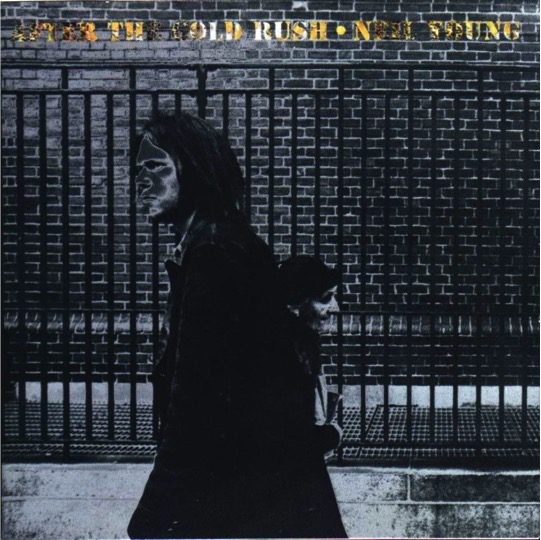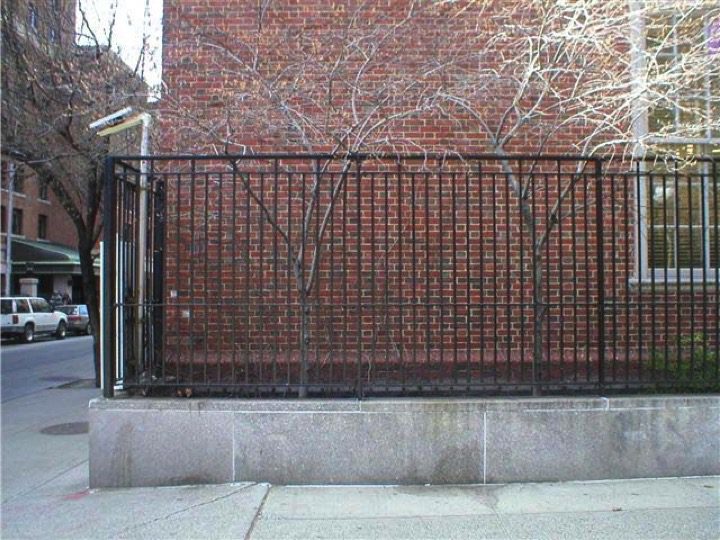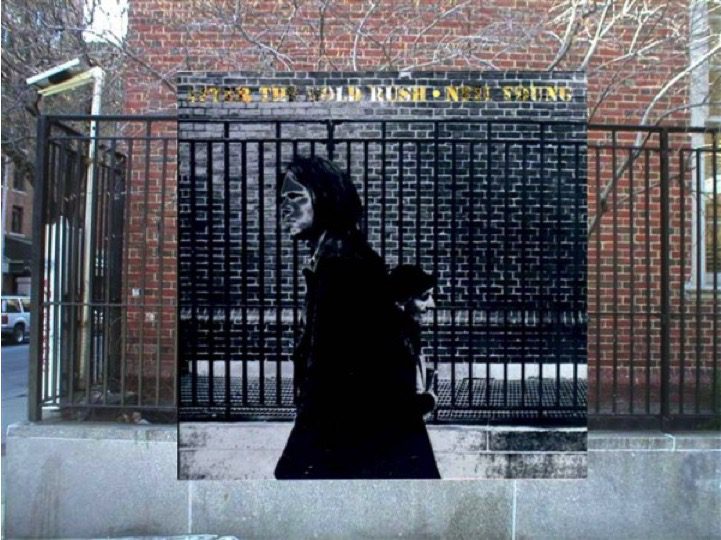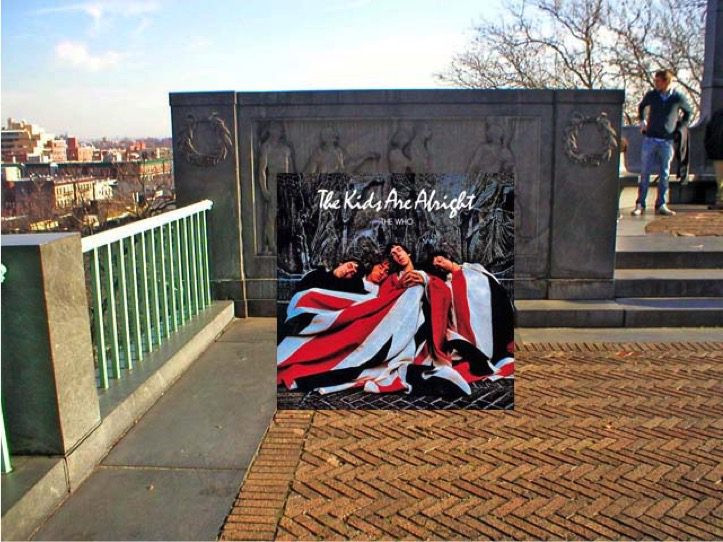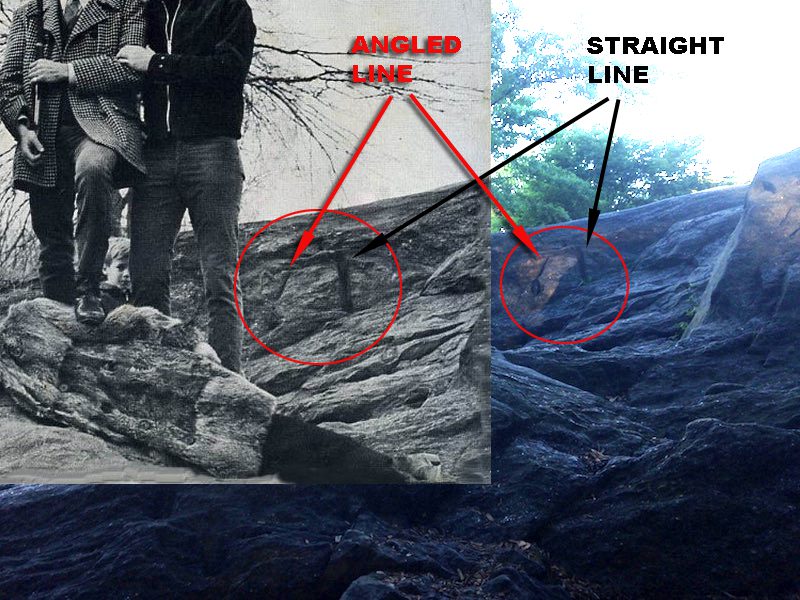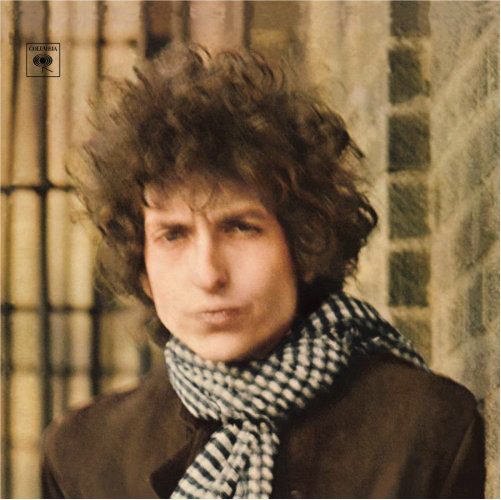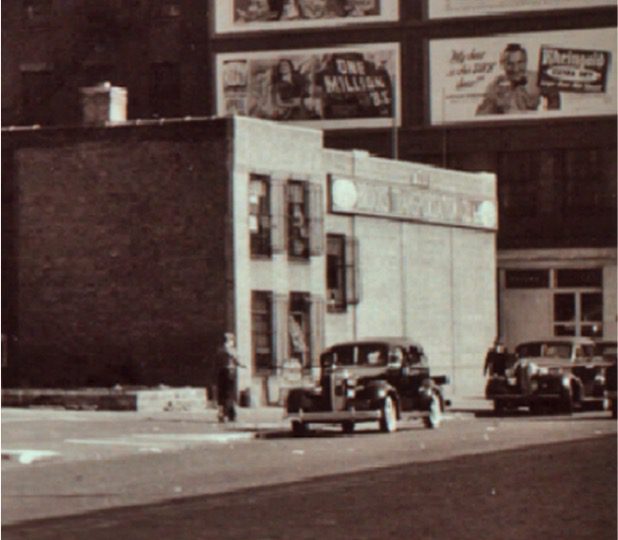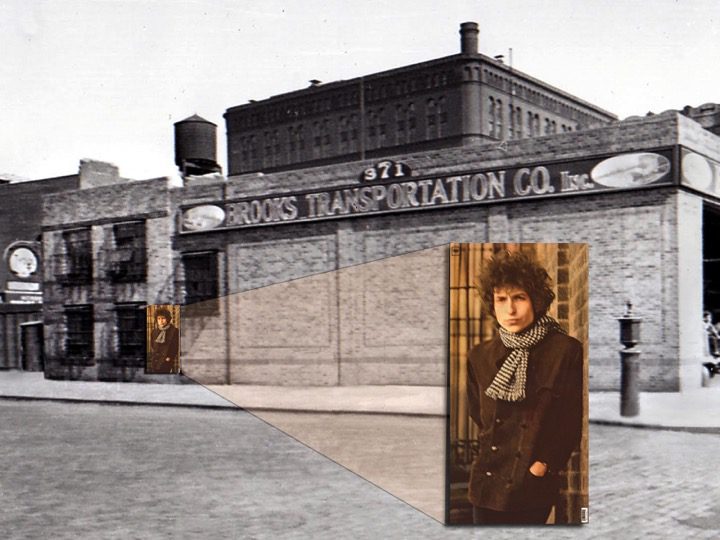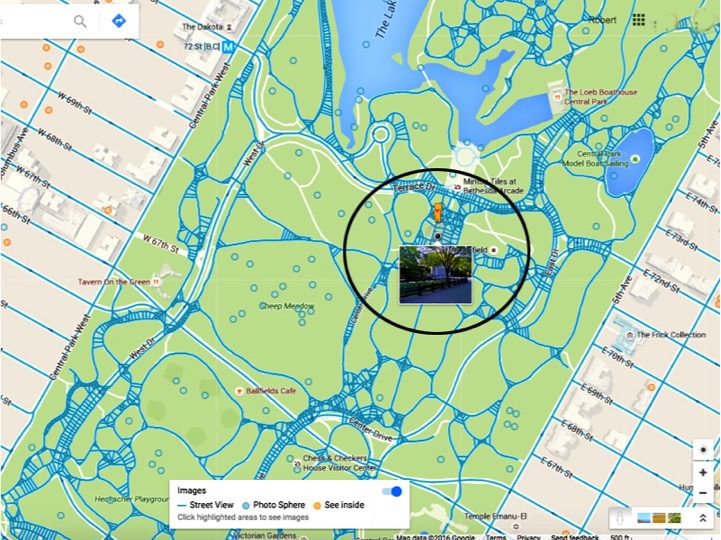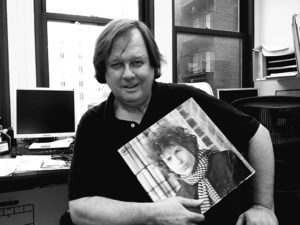
Welcome back to Sound & Vision, the Rumpus profile series that spotlights the creative talents of those working behind the scenes in the music industry. Up this month is Bob Egan, a man who’s widely known as one of New York’s foremost “pop culture detectives.” Using a combination of tools old and new, he has documented and photographed hundreds of New York landmarks—not the typical ones like the Statue of Liberty or the Empire State Building—but rather the sites where famous album cover photographs and other photographs of musicians were shot, about fifty in Central Park alone. Egan has also documented the locations of famous movie scenes, and scenes from famous artists’ renderings of the city.
Since 2011, he’s posted his findings on his website www.popspotsnyc.com, often with richly detailed and fascinating explanations of his search process and methods. The site has been featured in the national and international media, and has amassed thousands of social media followers around the world—including everyday folks who send Egan questions and clues about cases. It would be impossible to cover the full depth and breadth of his work here, but I recently had the chance to talk with Egan about a few PopSpots that really stand out for me. I’m excited to share our conversation, and whenever possible in addition to images I’ve also included embedded links to the full PopSpots dossier of each case.
***
The Rumpus: I’d like to start by asking you how you came to this work. When did your fascination with the locations of famous events begin? And was this always tied to music for you?
Bob Egan: A few years after I graduated college, I moved to Greenwich Village. It was 1977. I moved there because I had heard all about the music history that had taken place there with Dylan and the whole Bleecker and MacDougal folk scene. At the same time punk rock was beginning over in the East Village. But all the guidebooks to the Village were about the writers and poets form the 1920s and 1930s, long dead. There was nothing about what went on in the 60s. So I began to learn about the clubs, so when my friends came to town and wanted to see “the Village” I could show them all of the famous old folk clubs and where all the folk musicians and punks lived and hung out.
Rumpus: When did you begin photographing these locations?
Egan: I had been working for an Internet company and they taught me how to make a website. But after 9/11 a lot of the business collapsed because we did a lot of stuff with travel and no one was traveling anymore. I was laid off, and I had a lot of free time, so I would explore New York, and I decided I would track down where Dylan album shots were taken. The main one was Blonde on Blonde—my favorite. At the time there were maybe fifteen used record stores in the Village. I figured the record store guys would know where the album shot was taken but no one had a clue. While I was looking for it myself, I also started thinking about Neil Young’s After the Gold Rush.
Rumpus: It’s an interesting choice because the brick wall and iron fence could really be anywhere—they’re not particularly remarkable. How did you track down the location?
Egan: Well, having lived in New York, I looked right at that album cover and knew where it was. It was right near my favorite souvlaki place on MacDougal Street, right by the NYU Law School. One of the fun things was that when I checked where I thought the shot was taken, it wasn’t exactly where I thought it was. Some of the bricks didn’t match. So I walked around the building three times before I got to the right place, and even then it wasn’t a 100% precise match. I later discovered in the NYU history files that they had actually taken the side of the street apart and put it back together again! Now people can come to the same location and get their own pictures taken there, just like they do at Abbey Road. People have sent me copies of the photos they take, and it’s always a lot of fun to see them make their own PopSpots.
Rumpus: For sure! In another case I read about on your site, you discovered that the cover of The Who’s album The Kids Are Alright was shot in New York rather than London. Tell me more about how you figured that out.
Egan: I think I’d read somewhere that the photo was taken in Morningside Park. The park is below where it was taken—it was actually taken along Morningside Drive. I figured it out just by going there and walking around. There was another picture taken at the same time. The guys are under a flag and to their right are these two little kids sitting on a step looking at them, and that also gave me location clues. You know what’s fun for me? Remember in the movie Jaws when the guy’s on the beach and the shark comes out of the water and the whole perspective of the scene changes around Roy Scheider? The way they do that is that camera zooms in on him while it dollies back at the same time. I’m like that when I spot something.
Rumpus: Even the tiniest details count, for example, a brass knob that Paul Simon is holding on Simon and Garfunkel’s Greatest Hits album led you to the right place. What are some of the most unusual tools you use to find locations?
Egan: Well, I often use a combination of things, like Google books, Google street view, eBay, photo agencies, and also some very old-fashioned tools like map room at the New York Public Library, a magnifying glass, and old phone books. But here’s one: In the Dairy in Central Park—near the carousel—they sell a 4×4 foot map for $12 where a guy has mapped out something like 20,000 trees, every single path, every single building. I’ve found a lot of stuff using that map including a shot of the Lovin’ Spoonful that I’d been looking for about three years. To find it, I found another picture taken around the same time, and using the map I saw it was near the Heckscher Playground. To the left of that playground is a huge rock called “Umpire Rock” east of 62nd at 7th. And on the other side of the playground is another big rock called “Spur Rock.” I was walking by there, talking to my wife on the phone, when I noticed a drill mark that was in the photo and I knew I found the place!
Rumpus: A bit earlier you mentioned Bob Dylan’s Blonde on Blonde album cover. As with Neil Young, to me this background looks very generic. But even more than that it’s also blurry. What stood out for you?
Egan: That was one of the hardest ones! I probably worked off and on for four or five years on that, a lot of looking and looking, and following false leads. People often write to me and make suggestions. Eventually I’d been writing back and forth with a guy named William who was looking at some aerial views of Greenwich Village that were on the State of New York website, from the Department of Transportation or something. It was a really obscure bunch of photographs of the West Side Highway. He saw one that way in the distance looked like it might be the grillwork in the picture behind Dylan. He sent me that picture and said, “Bob, this might be the one.”
Rumpus: How did you prove it?
Egan: I went to the New York Public Library, which has an extensive collection of photos of old New York, like from the 1930s. They’re very easy to search. Someone made a map and you can search just about every intersection in the city. Using that I found the right building—it’s gone now but I was able to match the photos by comparing them via several directions. Fortunately we had access to about ten outtakes from the album cover shoot, which we found through a Google image search, to guide us. When that doesn’t work I can often go to eBay to track down photo credits; sometimes you can find outtakes posted on the photographer’s website or deep in Google image search results. I once found Neil Young’s house in Hawaii in an image a woman had put on her blog of her standing in front of the house!
Rumpus: I’m sure you get asked this a lot, but do you have a “photographic memory”?
Egan: I think of myself more as a detective with an eye for detail. When I was growing up one of my favorite albums was The Best of Herman’s Hermits. It features a picture of them in what turned out to be the band shell in Central Park. It looked like a “classical” building so I’d always thought it was in England, but then I read that the photographer lived in New York, and I started to wonder. I used Google street maps, zoomed into Central Park, and found it. It blew my mind! I always love discovering stuff rather than being handed it. If I’m interested in an album cover location, but I look it up and discover that someone else has already discovered it first, I move on to a new one.
Rumpus: You’ve also done PopSpots of locations other than album covers. Can you give me a few examples?
Egan: Yes, I started with album covers, but I’ve also done the “classic photos” of New York, and famous movie scenes and posters, for example Taxi Driver and Woody Allen’s Manhattan. My website, which I started in 2011, has a posting of twenty-five iconic film locations. It’s a good introduction.
Rumpus: As I walk around the city, New York feels as if it’s constantly in a state of being rebuilt. What’s harder: finding generic locations or disappearing locations—for example when a building has been torn down, or trees and other landmarks have been cleared?
Egan: Surprisingly, most of the buildings are still around. Just this morning a man wrote to me from somewhere in the world and said he was a big fan of a place called “The Scene,” which was a big 60s rock place in New York. He said he always wanted to know what it looked like. That place was knocked down a few years ago, but if you go to Google street view, you can actually go back in time ten years and see the exact doorway you’re looking for. I was able to send it to him.
Rumpus: How many PopSpots have you taken so far?
Egan: I have about seventy-two “longform” PopSpots on my website where I explain my whole process, and in addition I have about 225 “singles” which I post on Facebook and Twitter. I don’t go through the entire history of my process in the “singles”; it’s more a quick look.
Rumpus: And you’re soon offering walking tours?
Egan: Yes! There’s one in Greenwich Village that’s about ten streets, in a circle around Washington Square Park, where I’ll show about a hundred movie, rock ‘n’ roll, and folk music sites. A second tour will be in Central Park where we’ll see where musicians like the Beatles, Hendrix, and Billy Joel were all photographed. And my third tour is called “The 60-Minute Met” for people who either love or hate art. If you love art, you get to zero in on great stuff in one hour. And if you hate art, it’s over in an hour and then you can go eat! To put it together I went to the Met about fifty times, went into every single room, and figured out what the best stuff was and the quickest route to discover it.
Rumpus: One of the things I love about your site is you share all of the detective work, not just the results of your investigations. Why did you decide to take this even further, bringing people along with you… literally?
Egan: I love sharing my favorite things.
***
BONUS MATERIAL
Here’s a great mini-documentary where the photographer Jerry Schatzberg takes Bob Egan back to the site where he thought he shot the cover for Blonde on Blonde, and explains the surprising reason why the cover shot is blurry.
For more on Egan’s upcoming NYC tours, click here.
***
Feature photograph © Renell Lorray. All photographs provided courtesy of Bob Egan.
***
This interview has been edited and condensed. If you’d like to recommend someone for “Sound & Vision,” drop Allyson a line here.

